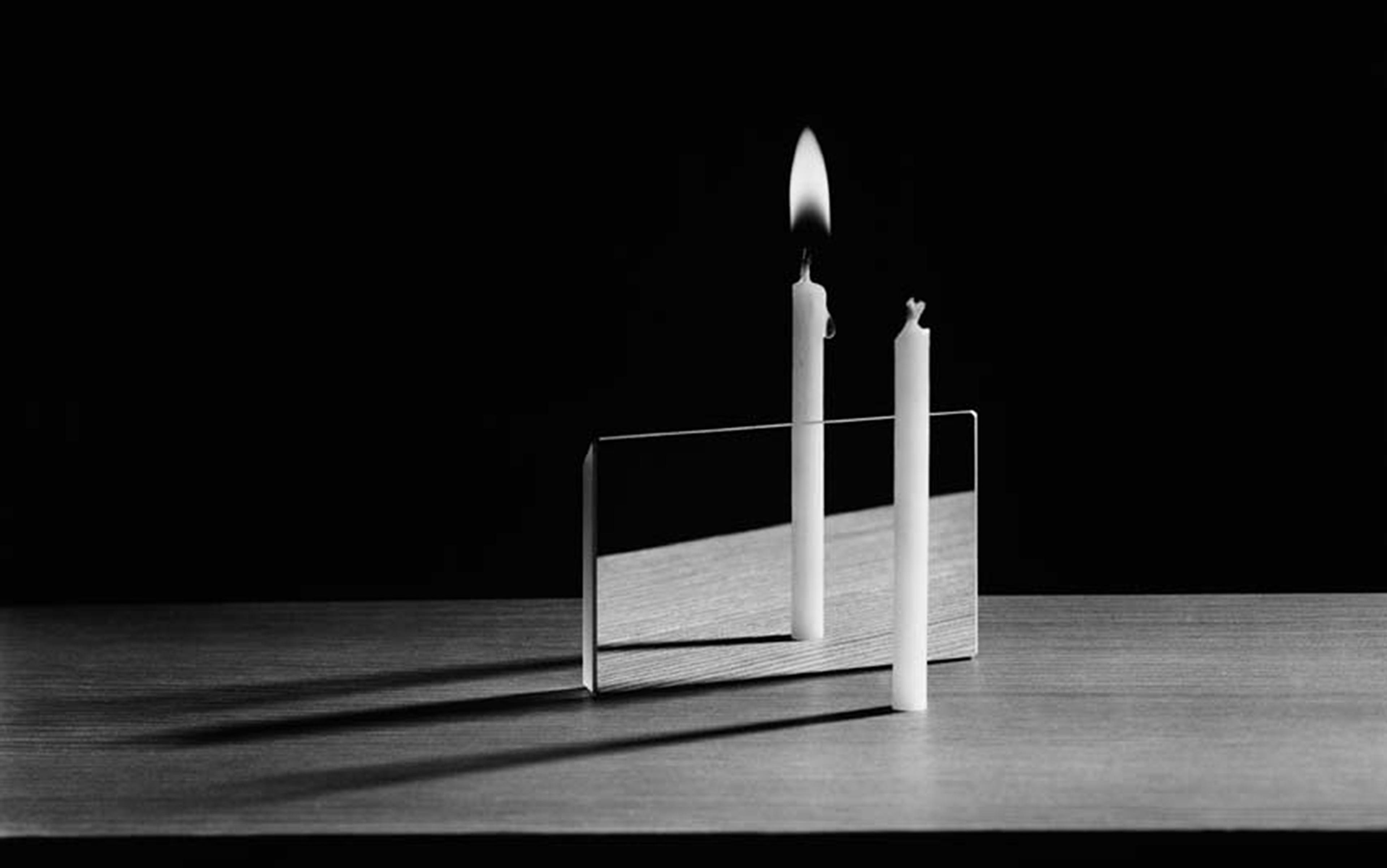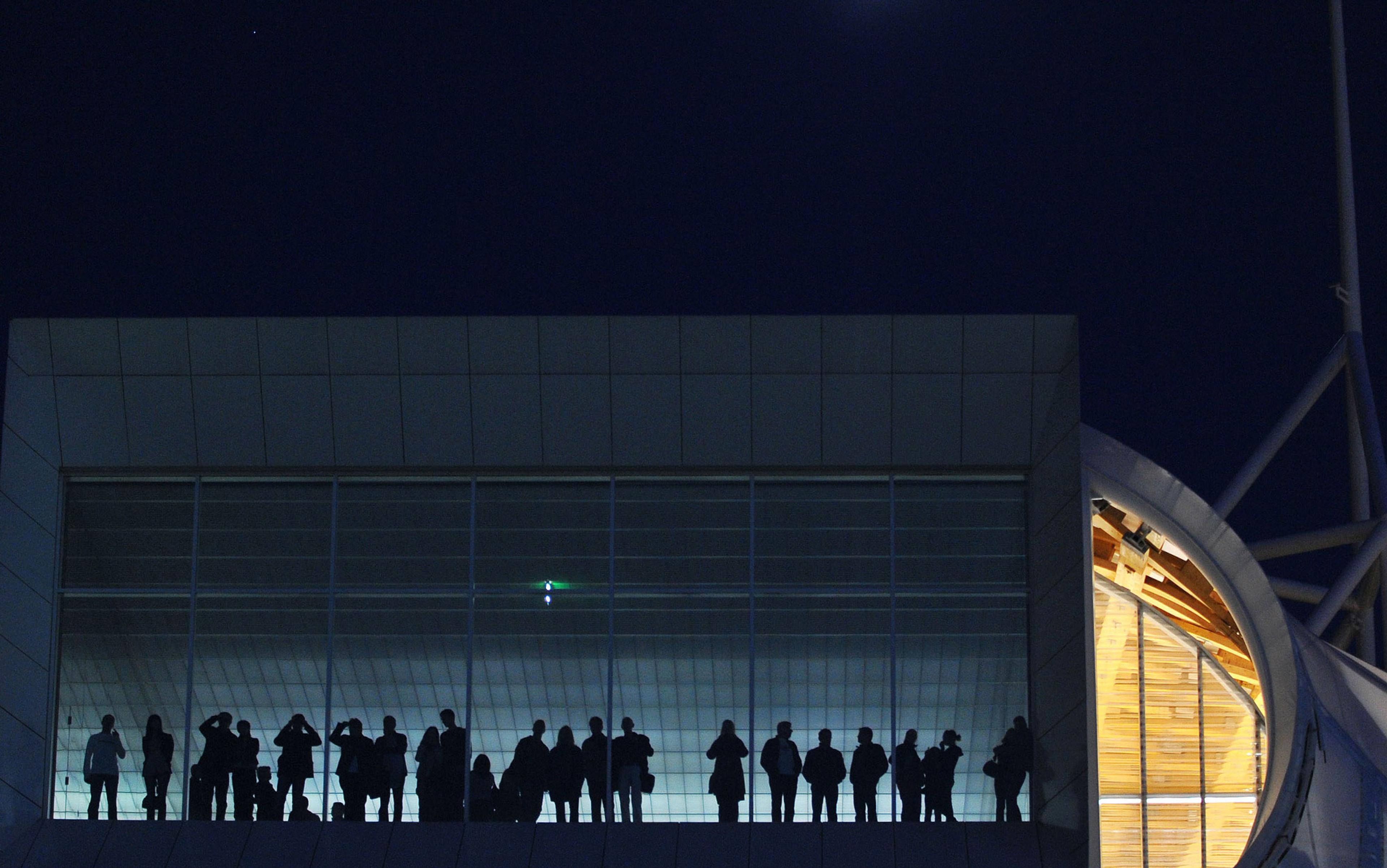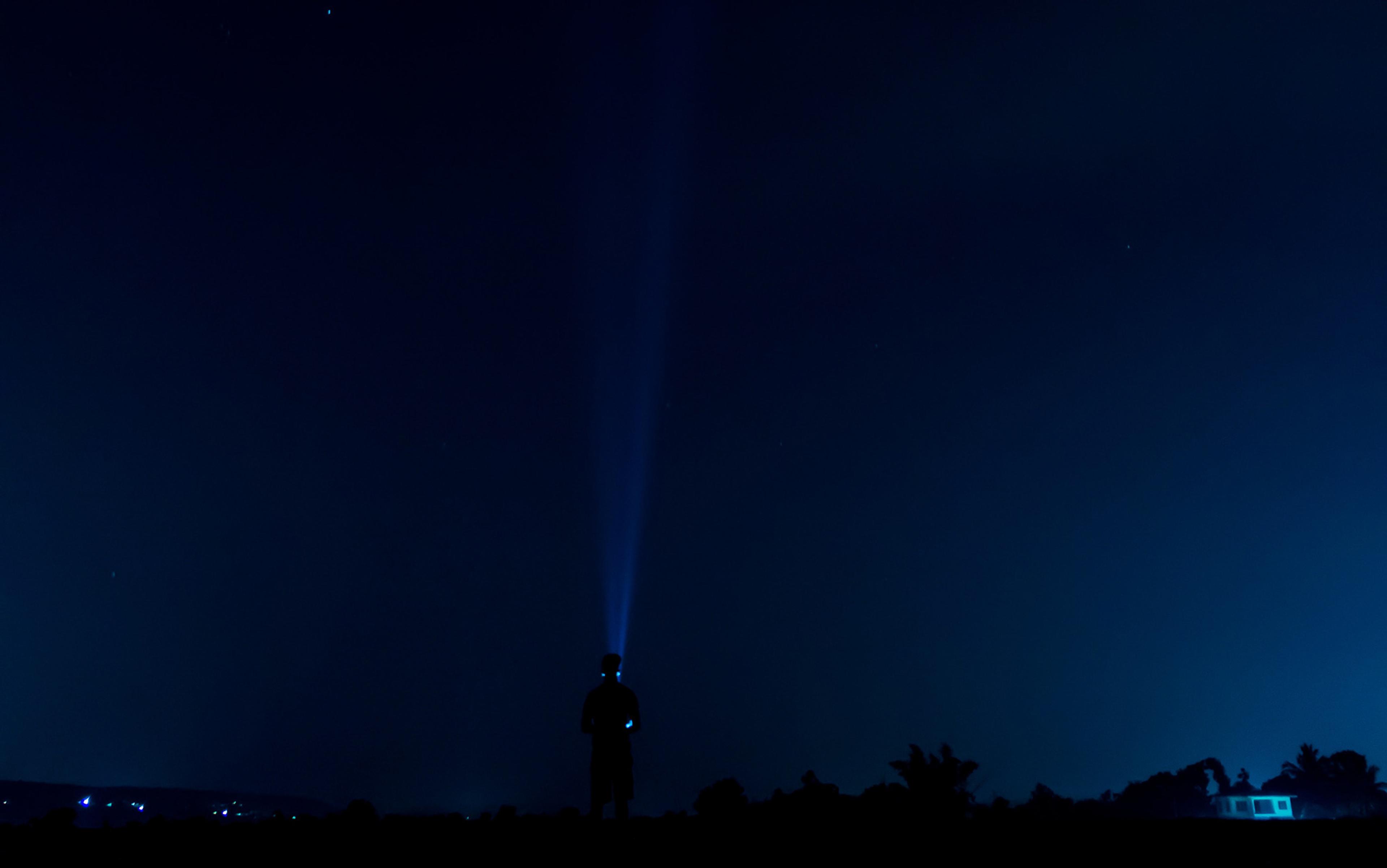Browse a shelf of popular science books in physics and you’ll often find a similar theme. Whether offering insights into The Hidden Reality (2011), Something Deeply Hidden (2019) or Our Mathematical Universe (2014), these books hint at an underlying, secret world waiting to be unravelled by physicists – a domain beyond our sensory perception that remains their special purview.
Over its history, physics has delivered elegant and accurate descriptions of the physical Universe. Today, however, the reality physicists work to uncover appears increasingly removed from the one they inhabit. Despite its experimental successes, physics has repeatedly failed to live up to the expectation of delivering a deeper, ‘final’ physics – a reality to unify all others. As such, physicists appear forced to entertain increasingly speculative propositions.
Yet, with no obvious avenues to verify such speculations, physicists are left with little option but to repeat similar approaches and experiments – only bigger and at greater cost – in the hope that something new may be found. Seemingly beset with a sense of anxiety that nothing new will be found or that future experiments will reveal only further ignorance, the field of fundamental physics is incentivised to pursue ever more fanciful ideas.
I argue that the pursuit of unity and dominance of a more fundamental reality presents itself not as physicists’ unique prerogative, but instead as an impossible burden placed on their shoulders by the modern world. I suggest that we should embrace a more pluralist and nuanced understanding of what comprises the cosmos, an understanding that not only accepts but invites criticism from other practices, disciplines and realities into its current predicament.
My time spent in physics, both as an aspiring theoretical physicist and later as a sociologist studying the practices of fundamental physics, has left me to wonder to what extent narratives of unity and finality continue to serve the communities that proliferate them. And, further, to what extent does achieving greater fidelity towards what comprises existence, to what reality is, and to the constituents of the cosmos require that physics give up the mantle as reality’s primary purveyor?
On a rainy day in central London, I sat down to interview a professor of astroparticle physics. At that point, I had spent just over a year observing weekly meetings of his research group: part of a collaboration constructing a large-scale experiment to detect dark matter.
During the interview, I noticed something that had until then passed me by. Far removed from the technical discussions on experiment modelling and data processing that often occupied group meetings, I became aware of a sense of anxiety, not just in this group, but in the wider particle-dark-matter community and fundamental physics at large.
It was an anxiety fed by the realisation that they had been at this a long time, and it had begun to make them wonder what they had to show for it. As the professor told me: ‘We keep getting bigger and building better. But maybe it’s none of this.’ In our interview, he spoke repeatedly about what he would do differently if new to the field, of the money spent on these experiments, and on the responsibility he felt for those early career researchers he’d enlisted for this task. It was clear that this was as much a personal concern as a professional one.
My path to this dark matter group had begun years earlier. After I graduated in astrophysics and applied mathematics, hoping to study reality at its most fundamental, I considered offers to pursue doctoral research in theoretical cosmology. However, when asked to choose from speculative projects that held little to no hope of observational verification, I left the field, disillusioned, realising that I would not find a greater understanding of reality there.
‘It’s akin to knowing everything about sand dunes … but not knowing what a grain of sand is made of’
Instead, I was drawn to sociology, which offered insight into a seemingly more real world – that of the everyday – and the opportunity to explore phenomena otherwise dismissed as unquantifiable, messy and subjective. Whereas the natural sciences primarily seek to make the unfamiliar familiar, the critical humanities often operate from the opposite impulse – to make the familiar unfamiliar. Their ambition is to interrogate matters taken for granted, and to see how given discourses, knowledges and even realities are mobilised politically.
Eventually, my research would bring me back to cosmology. I wanted to understand how the cosmos had become synonymous with the world beyond Earth and considered the exclusive preserve of physics. So, I decided to conduct ethnographic work with physicists investigating dark matter and other problems of cosmology.
Ask a physicist to list the big open problems of fundamental physics and cosmology and it is likely that the dark matter problem will be among them. Thought to comprise more than 85 per cent of all matter in the Universe, its presence is inferred but remains undetected. As the astrophysicist Priyamvada Natarajan succinctly explained at the Royal Academy of Arts in London in 2019:
We can exquisitely, spatially map and tell you where dark matter is … what it does … but we don’t know what it is. It’s akin to knowing everything about sand dunes: how they form, how they get reshaped … but not knowing what a grain of sand is made of.
That’s why, for the past four decades, particle physicists have built multiple detectors hoping to find those ‘grains’. Still more are planned, with each generation larger and more sensitive than their predecessor. Recently, however, a disquiet has begun to emerge. Despite all the investment of time and money, the likeliest candidates for dark matter, once so promising, have had their ‘moment of truth’ and have fallen short. Some physicists are even beginning to question whether they will find it at all. Indeed, another interviewee, who had dedicated their career to the search, went so far as to suggest that they did not believe dark matter existed, at least not in the manner that they’d come to understand it.
Even if these concerns did not appear to immediately trouble others in dark matter research, cosmologists and astrophysicists who are able to ‘exquisitely, spatially map’ dark matter and tell us ‘what it does’, they are cause enough for alarm. As one professor of cosmology told me: ‘It’s all tentative in the sense that, if you’re not confident that the particle even exists, then there’s some question mark hanging over the entire endeavour.’
Like the dark matter problem, much of fundamental physics’ present malaise, I realised, came not merely from the fact that its practitioners had not found a deeper reality but, rather, from the weight of the expectation that they should. Physics’ apparent ownership of the deepest reality appears justified less by the field’s empirical results than by the myths and narratives that sustain it.
The truth of the matter is that fundamental physics research has, according to its high standards, entered a period of stagnation. Those few physicists able to step away from the exacting demands of their practice will speak of physics as at a crossroads, led astray or even in crisis. As all these authors suggest, fundamental physicists appear increasingly short of ideas, with the latest experiments at best verifying older theories.
The field of cosmology is one of these areas. If you judged only by popularisations, the Big Bang cosmological story appears a mostly done deal. Many cosmologists, for instance, will speak of an era of ‘precision cosmology’, one where the only remaining work is to add detail to a Universe that has largely been solved. Despite this, much of the standard cosmological model remains theoretical speculation.
Dark matter isn’t the only problem. Dark energy, for instance, whose proposed existence initially prompted the call for precision cosmology, has not yet proven to be anything other than a mathematical term required to balance physicists’ equations in line with observations. And cosmic inflation, a theorised period of accelerated expansion of the very early Universe, stubbornly persists as a point of controversy due to its ‘all-too-convenient’ nature.
We risk what has been called a ‘post-empirical physics’. In short, a Universe lost to the world
Indeed, a closer attention to cosmology’s many claims suggests a Universe less solved than one fragilely constituted of speculations, better reflecting a collection of entities that, like dark matter, appear well reasoned but stubbornly remain unknown. As the cosmologist Pedro Ferreira states, there is a ‘real risk’ that further experiments will reveal only ‘a much more precise statement about our ignorance but nothing more’.
This is echoed in other areas of fundamental physics. In high-energy physics, the detection of the Higgs boson, in 2012, was the crowning achievement of a decades-long research programme that successfully confirmed the predictions of the Standard Model of particle physics, a framework for describing the microscopic structures of matter. Nevertheless, physicists had always regarded the Standard Model as a temporary solution, a stepping stone towards a more complete ‘theory of everything’ that would incorporate gravity into its explanations and successfully account for physical phenomena at all scales. For this reason, the model’s deficiencies and more convenient features were tolerated.
Yet, as the years have passed, those deficiencies remain. The multi-billion-dollar Large Hadron Collider (LHC) has shown nothing to suggest that the theorists’ extensions or alternatives are anything more than speculative indulgences. In response, some have called for an even bigger collider, such as the proposed Future Circular Collider (FCC), in the hope of glimpsing physics that they firmly believe lies beyond the Standard Model. The cost is an estimated $17 billion.
Adding to this are ever more speculative ideas about pre-Big Bang physics and the multiverse, as well as string theorists suggesting that their theories’ internal consistency may matter more than their empirical verification. With these, we risk what has been called a ‘post-empirical physics’. Unless something changes, this entails either the abandonment of fundamental physics, or a field of physics increasingly freed from empirical substantiation. In short, it risks a Universe lost to the world.
The physicists who have highlighted this stagnation tend to prescribe more physics, albeit a physics done differently. But none would go so far as to suggest that the answer may not lie in physics at all. Instead, I suggest looking at how we view and talk about fundamental physics. And that, while unity and finality may matter to the discipline, such concepts reflect the Universe less as it is, and more as we would hope to find it. In this picture, the appropriate prescription to physics’ present predicament may not be more physics but, rather, less.
Dreams of a ‘final theory’ have long motivated physicists. Seemingly on the cusp of delivering it, but forever beyond its grasp, theoretical physics has sought to bring together its two most successful theories, quantum theory and general relativity, under a ‘theory of everything’. Such a theory, it is hoped and at times assumed, would, in its more complete vision, also seek to encompass all other forms of knowledge within its explanations.
Even if, today, it is less fashionable to explicitly call out this latter ambition, narratives of unity and finality persist in the discipline. Indeed, it is an assumption that is often baked into the practices themselves. For instance, in 1993, the astrophysicist Edward W Kolb stated:
[T]he job of cosmology is to provide a canvas upon which other fields of science … can weave their individual threads into the tapestry of our understanding of the Universe. Nowhere is the inherent unity of science better illustrated than in the interplay between cosmology, the study of the largest things in the Universe, and particle physics, the study of the smallest things.
It is a unity that is believed to be inherent to science and that will typically have physics positioned at the very top. Such is the pervasiveness of this assumed authority that it has led some leading physicists to paint religion and philosophy as obsolete. For instance, in his posthumously published book Brief Answers to the Big Questions (2018), Stephen Hawking freely claimed that cosmological physics has left ‘no possibility of a creator’. With such contentions, it is not uncommon to think that physics alone can and should unlock the Universe’s ‘secrets’.
To understand why we readily conflate the world of physics with our unique and most fundamental reality, let us return to the case we opened with, that of the theme echoed by popular physics books. The proposal these books wish to make is clear: there is a reality hidden from our senses, more fundamental than all others, that remains physicists’ specialised duty to understand. If given the chance, at the cost of a paperback, that reality could be shared with the would-be reader, too. We should question what role these books and their narratives serve, when taken together and continuously repeated, and not just for a lay public but, indeed, for physicists themselves.
We’ve made the mistake of believing that, just because the world can be interrogated by physics, the Universe is fundamentally physical
As the theoretical physicist Carlo Rovelli remarks in the preface to Reality Is Not What It Seems (2014): ‘The more we learn about the world, the more we are amazed by its variety, beauty and simplicity.’ Further along in the preface, he provides a familiar rendition of Plato’s allegory of the cave in support of physicists’ quest for truth and towards a simple reality beyond complex appearances. Remarking that we ‘are all in the depths of a cave, chained by our ignorance, by our prejudices’, Rovelli argues it is science that, through its ability ‘to reveal new regions of reality, and to construct novel and more effective images of the world’, will bring about our deliverance.
As the sociologist Bruno Latour put it in Politics of Nature (1999), the allegory of the cave is a familiar one, and reveals a defining feature of Western and scientific thought: the cleaving of the world in two. On the one hand, a subjective world of confusion, a world of what Rovelli would call ‘prejudice’ and ‘ignorance’ – all attributes of what may be described as the social world. On the other hand, the natural world, objective and pristine, untroubled by humankind.
The physicist can lay claim to a role that seemingly is theirs alone, namely, to escape what Latour describes as the ‘tyranny of the social world … so that he will be able to contemplate the objective world at last’. In this role, physicists assume a special authority, and the unique ability to move back and forth between such worlds and speak for a ‘true’ reality to an imperfect humankind.
Such a division between a world of essential qualities (matter, form, shape and substance) and one of secondary qualities (colour, sound, taste, emotion, thought and so on) is what the philosopher and mathematician Alfred North Whitehead, in the 1920s, called the ‘bifurcation of nature’. And it is through a fallacy, what he termed the ‘fallacy of misplaced concreteness’, namely, the ‘error of mistaking the abstract for the concrete’, that we have taken the world of the abstract – the world given to physics – as more real, the originator, and the cause for the second one.
That we live in a time that seemingly privileges the reality of the material, physical and objective over what is thought immaterial, mental and subjective should come as no surprise to any of us. That it could be otherwise often does. Indeed, according to Whitehead, the bifurcation is contingent and corresponds to a very particular way in which we have come to configure reality. Through the many successes physics has known, we’ve made the mistake of believing that, just because the world can be interrogated by physics, the Universe is fundamentally physical.
How, then, can we take the possibility of difference seriously? And how can we envisage a world configured differently without foolishly renouncing the many insights physics has given us? Answering these questions requires that we confront what the psychologist and philosopher William James, a contemporary who greatly influenced Whitehead, in Pragmatism (1907), called the ‘most central of all philosophic problems’: the one and the many.
Contrary to the seemingly common-sense conviction of its undivided unity, James remarks that the world may be better understood as being both one and many, a world that is disclosed insofar as it is encountered to be such.
The proposition that James seeks is as radical as it is simple, and flies in the face of how much of philosophy and scientific investigation has operated. Upon reflection, there appears to be nothing to support the assumption of the overall or ultimate unity of the world, nor would experience appear to be able to confirm the notion of absolute division. As James shares in A Pluralistic Universe (1909), he has found ‘no good warrant for even suspecting the existence of any reality of a higher denomination than that distributed and strung-along and flowing sort of reality which we finite beings swim in.’ Yet, it has often been the aim of many forms of enquiry to work towards the discernment of a fixed and singular reality, or some aspect thereof.
A ‘pluriverse’ asks us to accept that there are many ways in which we may come to know and be in the world
James’s response, therefore, is to propose the existence of a pluralistic Universe, or a ‘pluriverse’, in which the world’s oneness and manyness are not characteristics of the world as it is, but as it becomes. A pluriverse is, above all, a world in the making. It remains forever unfinished and withholds the answer to its unity or division, leaving it as a question for ongoing empirical investigation.
To take this idea to its most radical, it asks us to accept that there are many ways in which we may come to know and be in the world, and to take seriously the realities proposed by other knowledges, practices and cultures as precisely that – as reality. To ‘take seriously’, however, is more than some act of liberal tolerance. As the philosopher of science Isabelle Stengers put it in 2003: ‘The ethical test may well … begin with trying to envisage others as having to tolerate you.’
This is not to say that there is one world that should seek to encompass all multiplicities. Nor is the activity of ‘taking seriously’ an act of naive relativism, wherein different realities are expected to coexist equally without critically investigating how they intersect, overlap and potentially contradict each other. The challenge is much harder than either of these: instead, it is an invitation to allow these realities to deeply trouble one’s own.
I suggest that we must take seriously the possibility of other worlds. By this I do not mean the familiar speculations of the multiverse, or the Many-Worlds hypothesis, introduced by physics to come to terms with the Universe’s ongoing indeterminacy. Rather, it is to take seriously those worlds that physics and modern realism have otherwise dismissed. That is, worlds in which, for instance, the Earth beings of Indigenous peoples are real, the ghosts of Japanese family members are cared for, and where God talks back to evangelical believers who speak with him.
This is also to suggest a return to openly questioning the claims of physics. Where once large public debates took place between physicists and philosophers on the nature of time and the extent to which physics can be said to speak for reality, today, public debates between physics and philosophy are seldom serious. Instead, when similar questions are debated in philosophy journals, they are largely settled in deference to the claims of physics.
Now, there is no doubting the immense achievements of fundamental physics. Further, its speculative wagers may yet be rewarded with time. However, such wagers have left the field unclear where to look for alternatives should it fall short of its own high expectations, and its practitioners, who are believed to be closest to reality, the furthest away from it.
In response, we need a humbler physics that is no less radical in its speculative ambitions but invites contradictory visions into its propositions, not only visions that are subservient to physics’ claims. In this, we would have a more adventurous physics, one that accepts and invites criticism from other practices and disciplines into its current predicament.
More pragmatically, it would allow for the possibility of engaging physics with other practices. Biophysics and climate physics are good examples of this. Unlike cosmology and fundamental physics, they are not premised on the supremacy of one field over the other but understand their limitations, and respective and restricted areas of application.
But we might go even more radical than this, departing from a purely physicalist approach to embrace modes dismissed as mere fantasy, story or ‘immaterial’, to re-engage physics with alternative debates, visions and configurations of reality. This may require that we abandon physics’ privileged place as science’s standard bearer, like we did the philosophers and high priests of old, as the practice with unique access to a deeper reality more fundamental than others.
It may even require that we abandon doing physics altogether, in the attainment of an expanded reality that not only accepts but encourages the possibility of difference and more. Or, as the speculative fiction writer Ursula Le Guin once put it, what we require are ‘the realists of a larger reality’.






